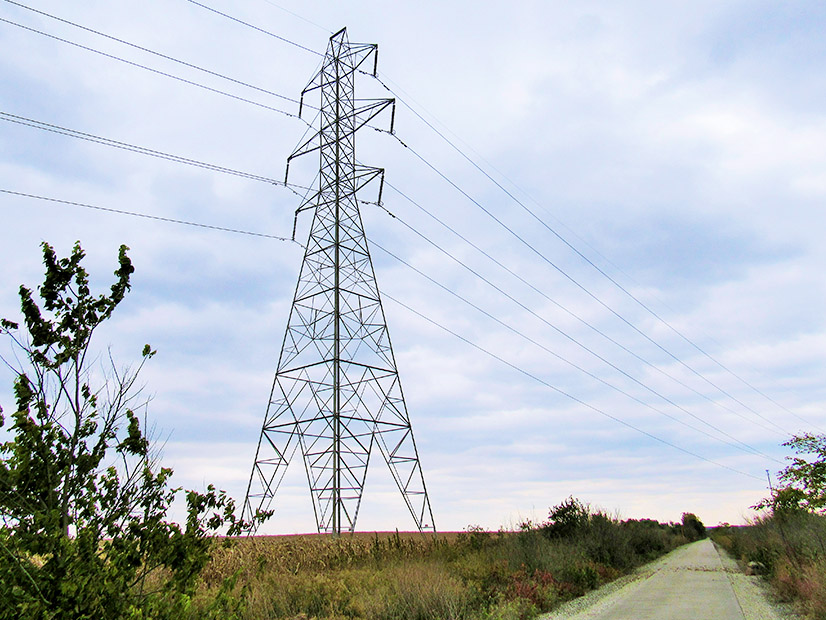Three priorities for FERC became clear this year: transmission reform, decarbonization and grid resilience. To address all three, FERC should provide true open access and competition for transmission development in RTO markets. Leveling the playing field for new transmission entrants in RTO markets would quickly provide needed reliability, clean energy and consumer benefits.
Deep anti-competitive flaws in RTO transmission policy deter both reliability and clean energy improvements. Current FERC policy permits incumbents in RTO markets to retain a blanket right of first refusal (ROFR) for projects meeting local reliability needs, but projects planned to meet regional needs must be competitively bid. To avoid this competition, incumbents in RTOs are building an increasing number of smaller local reliability projects which exclude larger regional projects. The result is higher transmission costs with little corresponding reduction in transmission congestion, interconnection delays and suppressed innovation, as demonstrated at FERC’s 2019 grid-enhancing technologies workshop and further detailed by industry participants in post-workshop comments.[1] Consumers would benefit from new, innovative regional and interregional transmission solutions that eliminate congestion and unlock renewable generation resources.
Despite billions of dollars in potential consumer savings, only 3% of new transmission investment in the U.S. was subject to competition between 2013 and 2017. In many of these cases, incumbents in RTOs blocked winning bidders from moving forward with projects by successfully lobbying for the enactment of ROFR statutes at the state level.[2] Such laws give incumbents the exclusive right to build, maintain and own transmission lines within their service territories. ROFR proliferation since FERC issued Order 1000 has inflated costs and harmed interstate commerce. All the while, consumers’ electric bills have continued to rise as transmission costs have doubled, and the reliability effects of transmission-related events have increased.[3]
With billions in transmission investment needed to meet aggressive clean energy goals, maintain reliability and enhance resilience to severe weather and cybersecurity threats, incumbent transmission owners are seeking to reinstate the federal ROFR that was eliminated by Order 1000. Some argue that transmission competition is a failed experiment that hinders the grid of the future by leading to inefficient and unnecessarily costly development. Industrial consumers and state consumer advocates adamantly disagree. They warn that giving incumbent transmission owners free rein without the downward cost pressure offered by competition will lead to even higher bills, further suppress innovation and increase delays in unlocking renewable generation. Instead, FERC should correct deficiencies in the existing Order 1000 competitive framework to spur innovation and reduce costs while promoting reliability and decarbonization efforts.
At a granular level, retail customers of incumbents in certain regions often experience more reliable service than the same incumbent’s wholesale transmission customers, perpetuating unreliable “holes” and economic “dead zones” within regional grids. This is especially evident in smaller municipal utilities and rural electric cooperatives. The unequal transmission service quality and rate treatment these underserved communities sometimes receive also results in the hindrance of renewable energy development, especially in wind- and solar-rich areas like MISO, SPP and the Southwest.
There is ample evidence that the disparity in reliability performance and clean energy access within certain RTO regions is not random. Peer-reviewed studies have found that “unequal resilience” between communities is driven by institutional bias and bureaucratic rules.[4] This will continue under the status quo, as many incumbent transmission owners in RTOs work to shield their transmission cap-ex budgets from competition.
Thankfully, the winds of change are upon us. Industrial consumers, state consumer advocates, renewable developers and new entrants are increasingly recognizing that their fates are intertwined. They are beginning to rally against anti-competitive behaviors, promoting the expansion of transmission competition under Order 1000 and fair RTO zonal cost allocation rules, such as equivalent cost recovery for incumbents and new entrants. They are calling on FERC to either preempt state ROFR laws or change the regulatory presumption of prudence for transmission projects subject to a state or federal ROFR.
Regional consumer and new entrant interests, especially in SPP and MISO, are identifying additional transmission options that benefit wholesale customers. This includes allowing customers to contract with non-incumbent transmission providers to plug the “holes” in the electric grid and remedy the chronic “dead zones” that incumbents and RTOs refuse to address. To enable this, FERC could declare that RTO zonal cost allocation practices treat all networked transmission facilities — whether owned by new entrants or incumbents — equally.
Effective transmission reform can produce cleaner energy and more reliable service that benefits all customers. But first FERC must remedy incumbency bias and reduce the barriers to new entrants. Tactically, FERC can start by revisiting and undoing the most egregious RTO-specific competitive carve-outs granted since Order 1000 was issued. There is no doubt that FERC has a broader vision of transmission reform that will require extensive rulemaking and the reversal of the competitive exemptions enshrined in Order 1000 itself. But FERC leadership should prioritize remedying zonal placement and eliminating Order 1000 carve-outs to enhance competition without delay.
Devin Hartman is director of energy and environmental policy at the R Street Institute.
[2] https://www.supremecourt.gov/DocketPDF/20/20-641/159802/20201105141834104_2020-11-05%20LSP%20Petition%20FINAL.pdf



